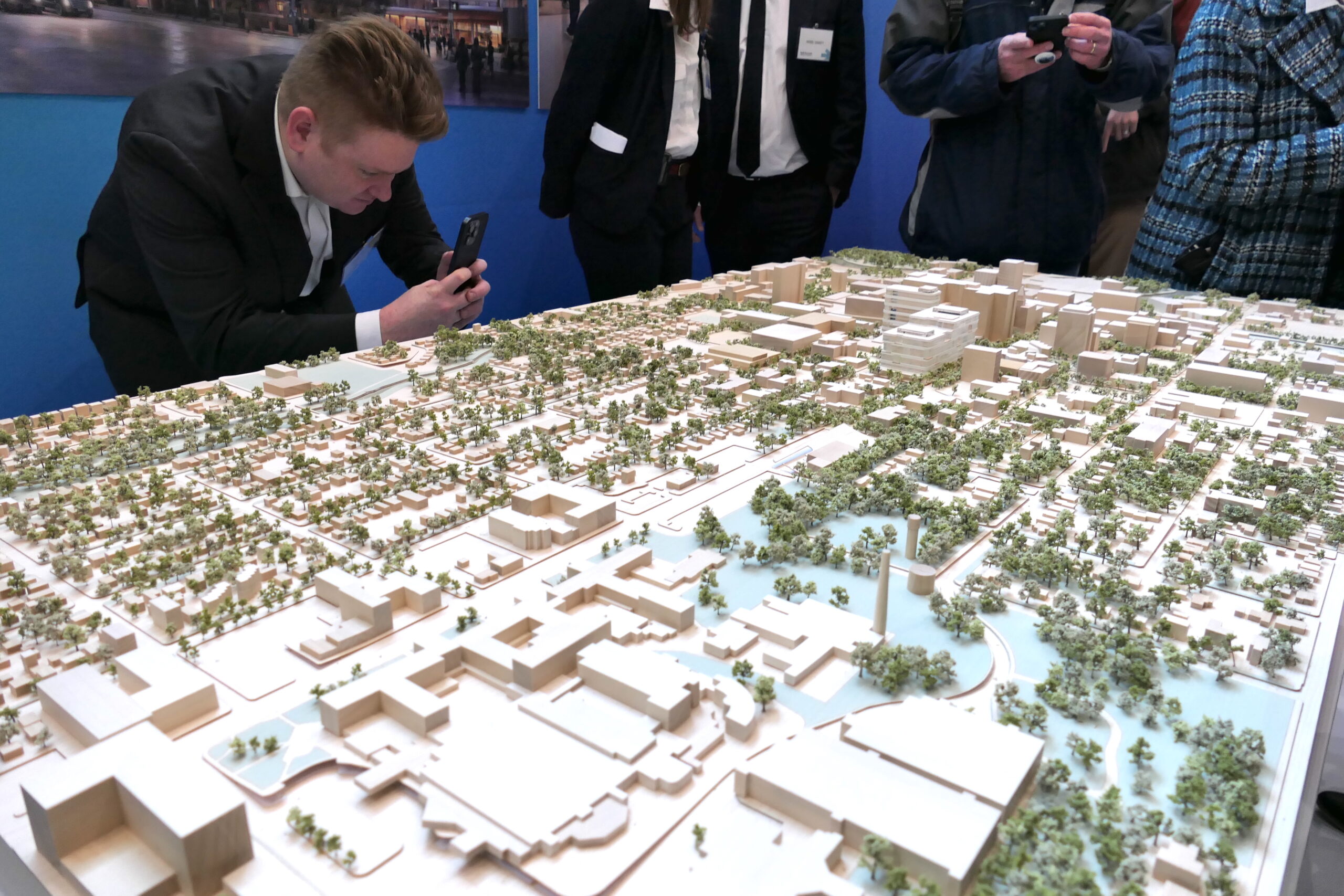Mayo Clinic leaders unveiled plans on Tuesday for five new buildings at its flagship campus in Rochester totaling $5 billion that will allow the hospital to “scale transformation in ways never before imagined.”
The project’s cost is more than four times that of the U.S. Bank Stadium, a ratio used by a Mayo Clinic executive in an ultimatum sent to Gov. Tim Walz and legislative leaders earlier this year. The health system said it would “direct this enormous investment to other states” if lawmakers passed two bills aimed at increasing nurse staffing levels and slowing the rapid inflation of health care costs. Both bills were gutted.
President and CEO Dr. Gianrico Farrugia said the initiative, dubbed “Bold. Forward. Unbound. in Rochester,” is a once-in-three generations opportunity to “redefine the future of health care.” And he thanked Walz and state and local lawmakers in attendance for making it possible.
Walz, speaking at Tuesday’s event, heralded the project’s promise to keep Minnesota a world destination for health care.
“There is no more important place on the planet and no more important work being done for humanity than is being done in this spot in Rochester, Minnesota,” Walz said.
U.S. Sen. Amy Klobuchar also spoke at the event via a pre-recorded video to an audience filled with local lawmakers, union leaders from the building trades, and scores of Mayo doctors and staff.
Construction for the new buildings will be spread out over six years beginning in 2024 and include two new clinical buildings in downtown Rochester nearly as tall as the hospital’s 21-story Gonda building. Altogether, Mayo Clinic leaders say the project is the biggest and most ambitious in the hospital’s 160-year history.

Mayo Clinic, the state’s largest private employer with over 48,000 workers, has been spearheading a decade-long redevelopment effort in Rochester to turn the small southern Minnesota city into the “Silicon Valley of medicine,” helped by hundreds of millions in public money.
In 2013, Mayo Clinic also made a last-minute threat that it would move billions in investments for Destination Medical Center to another state if lawmakers didn’t contribute $500 million toward the project. The public money has thus far been matched by about $1.25 billion in private investment.
The new facilities will be designed with medical “neighborhoods,” bringing treatment, labs, consultation and other services near each other to create “continuous care environments that will serve as patients’ homes.”
The initiative also plans for the expansion of robotics and automation, which Mayo leaders promise will support workers rather than replace them.
“We also need to invest in — and I know it makes people a little scared — in robotics and automation,” said Dr. Amy Williams, executive dean of practice. “We’re doing that so that we can better free up our staff, so that they can concentrate on the most important thing: And that is, our patients.”
Williams said Mayo Clinic plans to add staff in the coming years, even as it increases its use of automation and artificial intelligence.
Asked for more details on what medical procedures might be performed by robots, Williams said she couldn’t provide those details yet.
In 2021, the hospital announced it had demonstrated the feasibility of using robots to perform tasks that would reduce the number of times a nurse has to enter a patient’s room.
Dr. Craig Daniels, a physician leader for Bold. Forward. Unbound. in Rochester, likened the future facilities to the iconic Plummer Building, which towered behind speakers at the event. That building, the state’s tallest when it opened in 1928, was designed to improve patient care with state-of-the-art technology like pneumatic tubes that allowed medical records to zip throughout the building.
“Our new facilities will give care teams the tools to transform care models and experiences,” Daniels said. “But we’re not building buildings with the purpose of putting bricks and mortar together. Because an enduring institution is not made of the bricks and mortar but of its people.”
Some Mayo Clinic staff have complained that the hospital system has ignored the needs of its workers in its quest for ever greater expansion and larger revenues.
In interviews with the Reformer, Mayo workers said the hospital regularly sent their medical bills to collections while others said they pay thousands of dollars a year for health care costs. (Mayo Clinic’s benefit package for doctors and executives, meanwhile, includes reimbursements for out of pocket health care costs up to $10,000.)
Williams said she couldn’t speak to Mayo’s policy of sending employee medical bills to collections or other complaints about health care costs but that “this is an example of why we need to transform health care.”
Asked if she could say more about that, Williams said, “I can’t because we’re in the middle of transforming.”







